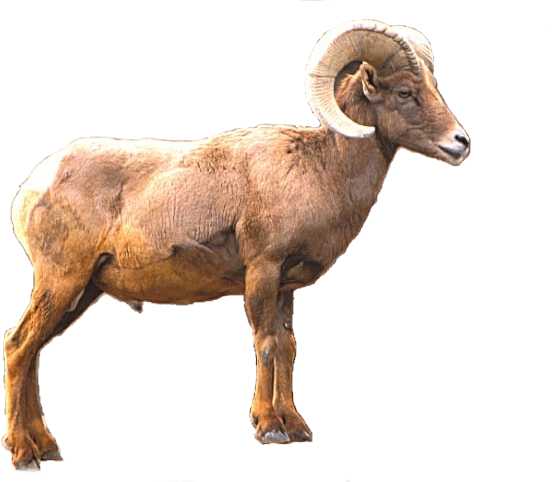Ram (Male Sheep) of Daniel 8

General Interpretation Principles - Characteristics Principle - For more information, see
Rules of Interpretation of Daniel and Revelation.
The ram (male sheep) was used in Daniel 8 to represent Medo-Persia. This is
easy to determine for the bible tells us who the ram represents. Here is what
it says:
Dan 8:20 - The ram which thou sawest having two horns are the kings of Media and
Persia.
It was noted by Daniel that it had 2 horns, but one horn came up later than the
first and became the higher of the 2 horns. This animal appears to have started
out with one horn, like the goat, because it says the second horn
came up last
and then rose higher than the first horn. This would imply that one horn was
present initially and the second came up later and then rose higher.
The pattern of the ram is like that of the goat. Both evidently started out
with one horn, but in this case was quickly eclipsed by a second horn, so both had
one or more horns arise after the first horn. It appears that God is trying
to show us that we can consider a horn coming up after another horn in vision to
correspond to a power that arises out of the same initial kingdom but arises later
in time.
In history, the kingdom of Medo-Persia is where modern day Iran is located.
Historically, the Medes initially formed the kingdom, and later the Persians arose
from within the same kingdom and took it over. It seems that Cyrus, a Persian,
was evidently a dependent vassal king under the Median King by the name of Astyages.
In 549 BC Cyrus overcame Astyages (who was the grandfather of Cyrus II) and became
king of the Median empire. He then proceeded to defeat resistance within the
Median empire and within a few years was able to unite his entire empire.
After that he turned towards Asia Minor and defeated Croesus, the king of the Lydian
empire in 546 BC (the first of this kingdom's 3 conquests). Next, he defeated
Babylon which was the second of this kingdom's 3 conquests (in 539 BC or 538 BC,
depending on the reference source, though most say 539 BC). Cyrus was succeeded
by Cambyses. In 525 BC Cambyses defeated Egypt to complete his empire, which
was the 3rd conquest of the 3 conquests this kingdom engaged in. He attempted
to enlarge it even further by battling with the Kushite kingdom of Meroe, but was
defeated.
For more details of the history of Persia,
see the article from the Catholic Encyclopedia on Persian History.
Click here for a map of the Persian empire at about 500 BC.
Something interesting is that sheep can be somewhat aggressive as is shown in this
vision, for no animal was able to stand up to the ram. But along comes the
goat and the sheep is defeated quickly. Now anybody who has lived around sheep
and goats will tell you that goats tend to be more aggressive and bossy than sheep.
Sheep will usually follow the lead of goats.
A sheep usually has curved back horns which might suggest a less aggressive tendency
of the kings leading Persia compared to the goat which had a prominent horn between
its eyes, suggesting a relatively straight horn, perhaps pointing forward, and suggesting
strong aggression which certainly characterized Alexander the Great. So, here
again we see the illustration of the
Characteristics Principle
in vision and as fulfilled in history.
Click on this arrow to go to the Goat of Daniel 8
![]()
Note: Time moves forward from left to right